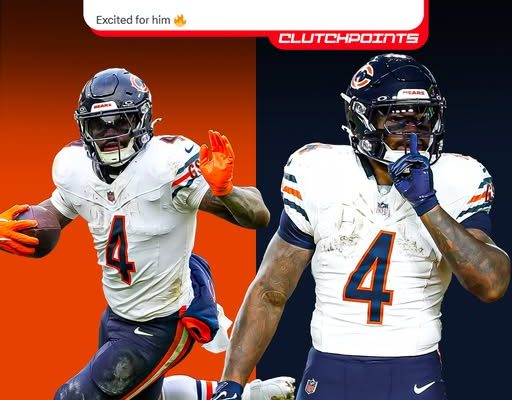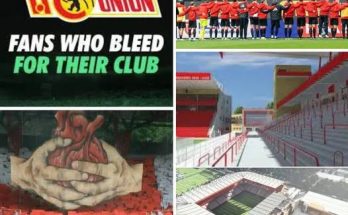Breaking: News – Hey Bears Fans, Look at This Maybe the Bad O-Line Had Something to Do With It
As training camp heats up and anticipation builds for the 2026 NFL season, Bears fans across the country are piecing together the puzzle that has been Chicago’s ongoing offensive struggles. One question keeps popping up in group chats, tailgates, and late-night football podcasts: Was the offensive line more to blame than we realized?
Maybe the quarterback didn’t regress. Maybe the scheme wasn’t broken. Maybe the receivers weren’t always covered. Maybe — just maybe — the bad offensive line had everything to do with it.
It’s not a revelation that offensive lines are the engine of any successful offense. But in Chicago’s case, it’s becoming clear just how deeply a weak line has affected the team’s development — from stunted quarterback progressions, to missed red zone opportunities, to full-on gameplan limitations. Now, as new personnel arrive and new leaders emerge, it’s time to revisit what’s gone wrong and what the Bears are doing to fix it.
Over the last three seasons, the Bears’ offensive line has struggled with consistency, health, and cohesion. Injuries rotated linemen in and out like a turnstile. Rookie starters were often overwhelmed. Free-agent additions didn’t always pan out. And the team’s lack of continuity up front meant quarterbacks were often left running for their lives.
From Justin Fields to Tyson Bagent and now Caleb Williams, Bears quarterbacks have had little time to throw. Pressure rates were sky high. Pass-block win rates were among the worst in the NFL. Even the play-calling had to be adjusted to account for poor protection — quick screens, rollouts, and max protection packages became default strategies rather than strategic wrinkles.
Caleb Williams, one of the most anticipated No. 1 overall picks in recent history, walked into this firestorm in 2025. While flashes of brilliance shone through, there were also long stretches of stalled drives, forced throws, and a noticeable discomfort in the pocket. Many analysts were quick to question the rookie’s vision or poise, but recent breakdowns show a more troubling trend: free rushers, missed assignments, and pocket collapses within two seconds of the snap.
Even the running game, a supposed strength with players like Khalil Herbert and Roschon Johnson, suffered under constant disruption in the trenches. Running lanes closed before they opened. Negative-yardage plays became common. And the Bears’ inability to control the line of scrimmage derailed drives before they ever got going.
So yeah, maybe the bad O-line had something to do with it. And more than we wanted to admit.
Data supports the eye test. In the 2025 season, the Bears ranked:
That last stat is especially damning. It means Bears quarterbacks were being pressured faster than any other team’s. You could have the most accurate QB in the league, the fastest receivers on the field — but if you’re being hit 1.8 seconds after the snap, none of that matters.
A deep dive from several analytics sites shows a sharp drop in EPA per play when pressure arrived quickly. The offense essentially had no chance to function. In games where the offensive line held up for more than 2.5 seconds on average, the Bears moved the ball, scored points, and looked like a competent unit.
But those games were rare.
It wasn’t just the stats. The emotional weight on the offense was visible.
Caleb Williams, usually calm and composed, showed frustration late in games — not at teammates, but at circumstances. You could see it in the subtle shoulder slumps after sacks. In the quick decisions to scramble, even when protection was holding. In the hesitancy on third down, wondering whether pressure was coming before it even arrived.
Receivers like DJ Moore and Rome Odunze ran crisp routes, but too often the ball never came. Plays were designed to develop deep, but the line couldn’t buy enough time for the routes to unfold.
Offensive coordinator Shane Waldron was forced to abandon large portions of his playbook. The offense became reactionary instead of aggressive — a survival mechanism instead of a scoring machine.
And yet, the Bears kept fighting. Despite the pressure. Despite the breakdowns. And now, that fight is translating into a front-office mission to fix the trenches once and for all.
Ryan Poles, a former offensive lineman himself, knew something had to change. And in the 2026 offseason, the Bears made it clear they were serious about rebuilding the offensive line.
First-round pick used on an interior offensive lineman: Widely considered the most technically sound guard in the draft, this rookie brings tenacity and polish. He’s expected to start Day 1.Signed a top-tier left tackle in free agency: With experience and Pro Bowl pedigree, the new blindside protector adds immediate stability and leadership to the line.Depth moves to prevent the injury curse: The Bears signed multiple veterans and drafted mid-round linemen to ensure they aren’t stuck scrambling again if injuries hit.
More importantly, the Bears have emphasized continuity. New offensive line coach Scott Peters has been vocal about building chemistry early and often. “The biggest enemy of a good O-line isn’t talent,” Peters said during minicamp. “It’s turnover. You need five guys playing as one. That’s what we’re building.”
And through the first five practices of training camp, signs are encouraging. The pocket looks firmer. Williams has time to operate. Run lanes are opening. And perhaps most importantly — there’s swagger on the line again.
If the offensive line can hold, everything changes.
Caleb Williams becomes the quarterback Bears fans dreamed of. His improvisation becomes a weapon, not a necessity. His accuracy and arm talent can finally shine through full-field reads. DJ Moore, Keenan Allen, Rome Odunze, and Luther Burden can stretch the field with deep posts and double moves that have time to develop.
Roschon Johnson can become a bruising, downhill runner instead of having to dodge defenders in the backfield.
Waldron can finally dial up a complete playbook — not just the quick-pass-and-pray game.
And the Bears? They could become an elite offense.
That may sound bold. But consider this: in the few games last season where the line held strong, the Bears averaged 27 points. In the others? Just 16.
The difference between 7–10 and 10–7 isn’t always the quarterback or the defense. Sometimes it’s five guys in the trenches doing their jobs.
So Bears fans, take a breath. The flashes of brilliance from last year weren’t a fluke. They were previews of what this offense could be with time and protection. If the new line gels — and so far in camp, it seems like it might — we could be watching one of the league’s most exciting turnarounds.
And maybe, when the Bears punch it into the end zone for the third time in a game this fall, you’ll think back to this conversation. Maybe the bad O-line had something to do with it, you’ll say. And maybe — finally — now that they’ve fixed it, this team can fly.
So get ready, grab your jersey, and cue the fight song.
The Bears are building from the trenches up. And this time, it might just work.



